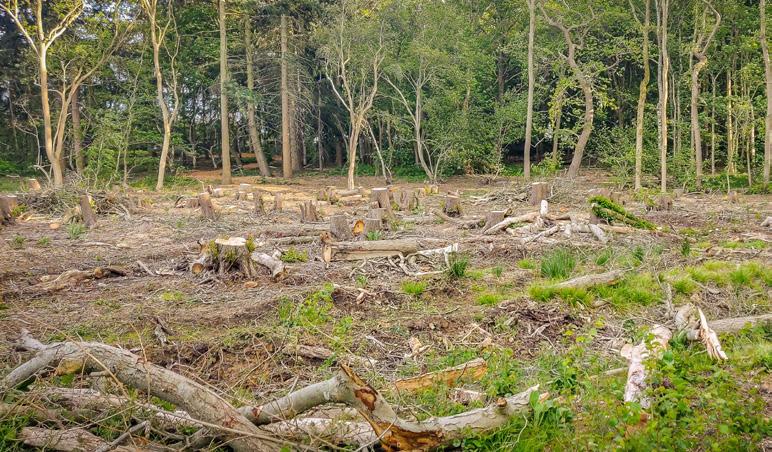
2 minute read
The ancient art of coppicing
wildlife The Ancient Art of Coppicing
by Dan Connors
Advertisement
No one knows how long coppicing has been going on but there’s evidence of it from the Stone Age. At some point in the distant past one of our ancestors realised that if you chopped certain trees down new shoots would sprout from the base and would keep doing this time and time again.
It provided a renewable source of fencing and building materials as well as fuel for fires. Woods would be divided up with each section being cut one year in seven. As the industrial revolution took place coppicing provided a source of charcoal to smelt iron and was being managed large scale to produce the fuel needed.
Guy & Jane Lambourne, managers of Wassledine

Green shoots are already emerging from the coppiced alder wood of Campton Plantation
As technology developed coppicing fell out favour, with fewer people managing woodland in this way and some of the skills and knowledge being lost. But not everyone has given up on it and people are increasingly see the value in reviving this ancient skill. Coppicing has real benefits for wildlife. Wildflowers thrive in coppiced woodland and birds and butterflies also do well. In wet areas, coppicing prevents the trees from growing large enough to dry out the ground, allowing species which prefer the damper conditions to flourish. Central Bedfordshire Council have recently started to restore the Upper Alders in Campton Plantation and although it currently looks devasted the changes over the next few years will be worth watching.
Another local coppicing location is Upper Gravenhurst where Guy and Jane Lambourne have been coppicing the ancient woodland of Chester Wood since 1997 planting new coppice areas two years later. Each year they coppice part of the hazel woodland providing bean poles for private customers as well as formal gardens such as Woburn Abbey. As much of the wood as is possible is used with the tips making pea sticks and some of it is now used to produce charcoal. Hazel is not the only wood to be coppiced. Guy and Jane also make use of a willow plantation to provide the raw material for woven plant supports as well as materials for hedge layers, another ancient skill which is seeing a resurgence.
If you are interested in finding out more then when COVID-19 restrictions are lifted Guy and Jane run a series of “Days in The Wood” where you can pick up a skill or listen to a story. Details available at www.wasseldine.co.uk. Their high quality, home made charcoal is still available at Franklin’s Farm Shop at Thorncote and Stephen’s Plants at Maulden.








